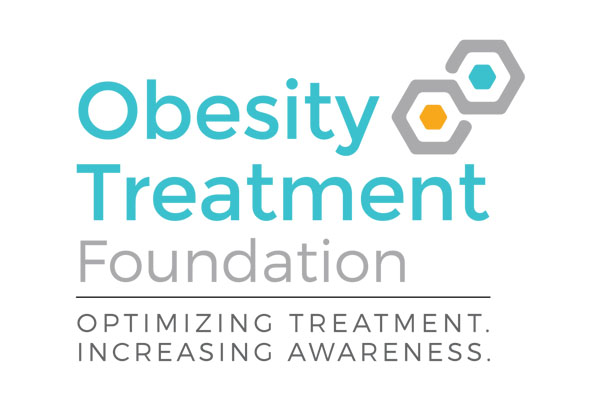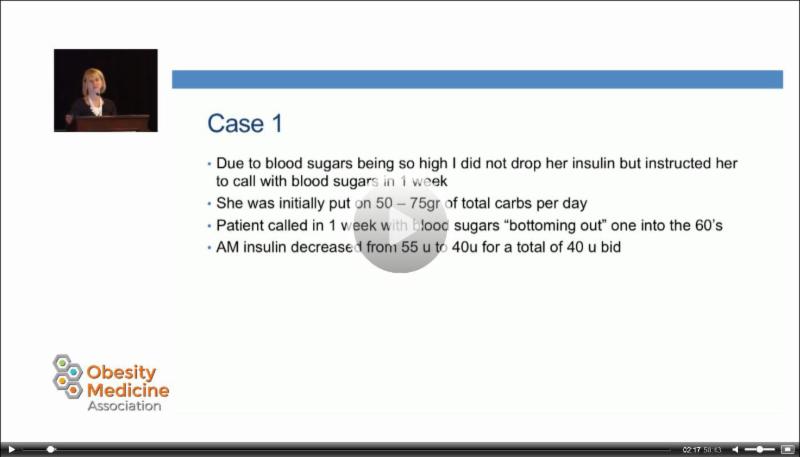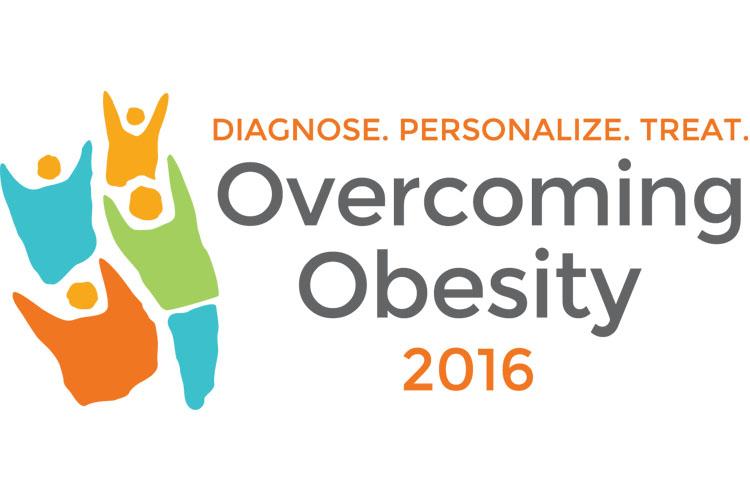Further your education on the Obesity Medicine Academy
We're making it easier than ever to further your clinical obesity education -- now online! Start learning today at OMAcademy.org. The Obesity Medicine Academy is an online library containing recordings of presentations from past conferences. When you visit the Academy, you can search by topic or speaker to find the presentations you want to watch. After you watch a presentation, pass the quiz to earn credit -- it's all online and available at your convenience. By mid-May, we'll also upload the presentations from Obesity Medicine 2016, our most recent conference in San Francisco. Whether you attended the conference and want to refresh your memory, or missed this one but want to get the same great education, find it on the Obesity Medicine Academy. Not sure how to use the Academy? Watch a short demonstration and see how the Academy works before you start learning.
|
|

Proudly display your membership in OMA
One of the benefits of being an OMA member is the free, downloadable proud member artwork, which helps you display with pride that you are a member of an organization committed to preventing, treating, and reversing the disease of obesity.
Use the proud member artwork in your email signature and on your website. To access the proud member artwork, log in to your OMA account, where you can either copy the HTML code or save the artwork to your computer. Don't forget to link the proud member artwork back to obesitymedicine.org.
|
Second Contrave safety trial halted
The COVENE trial started in December of 2015 was halted last week due to complications. COVENE was meant to assess major adverse cardiovascular events in patients with obesity and cardiovascular disease after six years of follow-up. With few patients enrolled and too much time required to conduct the study, Orexigen -- which now controls post-marketing development programs for Contrave -- decided to halt the trial. Orexigen plans to conduct a different cardiovascular outcomes trial for Contrave to meet the FDA's requirements. Learn more.
|
Obesity Treatment Foundation
|
 Submit your letter of intent for a $15,000 research grant Submit your letter of intent for a $15,000 research grant
The Obesity Treatment Foundation (OTF) will offer one research grant this year in the amount of $15,000. This grant will assist an obesity medicine specialist in engaging in clinical research focused on determining effective obesity treatment approaches. OTF is now accepting letters of intent from clinicians interested in applying for this grant. Letters of intent are due by May 13, and selected applicants will be invited to submit full proposals by June 6. Carefully review the submission instructions before submitting your letter of intent. Questions? Contact OTF at stacy@obesitytreatmentfoundation.org.
|
 |
|  |
From left: Drs. Wickham Simonds, Spencer Berry, and Krishna Doniparthi
|
Hair growth challenge raises $24,000
A year ago, Drs. Spencer Berry, Krishna Doniparthi, and Wickham Simonds brainstormed a creative way to raise money for the Obesity Treatment Foundation (OTF) and increase awareness about the foundation's initiatives. Drs. Doniparthi and Simonds agreed to grow their hair for a year -- any time their patients or colleagues asked about their hair, they explained what OTF is and why they support it.
Finally, a year later, we got to measure how long they each grew their hair and add up the pledges made by members of OMA. Drs. Berry, Doniparthi, and Simonds all agreed to match the pledges made up to $5,000, which resulted in a total of $24,000 raised to support clinical obesity research!
Thank you to all who pledged and donated. If you still want to give a gift to the foundation, visit OTF-giving.org.
|
 |
 USPSTF releases final research plan for weight loss USPSTF releases final research plan for weight loss
After an open comment period in which OMA and our Obesity Care Advocacy Network (OCAN) partners submitted comments, the U.S. Preventative Services Task Force (USPSTF) released its final version of the research plan for behavioral and pharmacological interventions for weight loss to prevent obesity-related morbidity and mortality. From the comments submitted by OCAN, USPSTF adopted people-first language about obesity into the research plan. OCAN will use the final research plan as a basis for continued advocacy efforts this year.
Read the final research plan. To receive future notifications from USPSTF related to this research plan and other clinical service recommendations, sign up for the USPSTF email list.
|
|
|
|
Executive Director
Sponsorships and Exhibits Manager
Operations Manager
Education Coordinator
Communication Manager
Executive Director of the Obesity Treatment Foundation
|
|
101 University Blvd.,
Suite 330
Denver, CO 80206
|
|
|
Body mass index in 2.3 million adolescents and cardiovascular death in adulthood
Twig, G., et al. New England Journal of Medicine, 2016.
A study was conducted to determine if there is an association between childhood obesity measured via BMI and death from cardiovascular causes in adulthood 40 years later. Results showed that during 42,297,007 person-years of follow-up, 9.1% of deaths were from cardiovascular causes, including 1,497 deaths from coronary heart disease, 528 deaths from stroke, and 893 sudden deaths. When the effect of BMI was taken into consideration, there was an increase in the risk of death from cardiovascular causes and all causes in the group that was in the 50th to 74th percentiles of BMI, which is within the "normal" BMI range. Hazard ratios in the group with obesity (≥95th percentile for BMI) were significantly higher than the reference group in the 5th to 24th percentiles for death from cardiovascular causes. This study shows that although overweight and obesity were strongly associated with increased cardiovascular mortality in adulthood, the classification of BMI in the seemingly normal range (i.e., the 50th to 74th percentiles) during childhoodmay underestimate the risk of later cardiovascular mortality. View article
|
Maternal caffeine intake during pregnancy, early growth, and body fat distribution at school age
Voerman, E., et al. Obesity, 2016.
Recommendations for caffeine intake during pregnancy have varied through the years. A study was conducted to examine the associations between maternal caffeine intake during pregnancy and offspring growth patterns at school age. A total of 7,857 mothers and their children were included in the study. Maternal caffeine intake during pregnancy was assessed by questionnaires. Results showed that compared to mothers who consumed less than two cups of coffee (180 mg caffeine), mothers who consumed more than six cups per day had babies with lower birth weight, higher weight gain from birth to age 6, and higher BMI from 6 months to 6 years. Children whose mothers consumed more than 180 mg of caffeine per day had a higher android/gynoid fat mass ratio. These results suggest that caffeine intake during pregnancy can have a significant impact on childhood growth patterns and body fat. View article
|
FTO genotype and weight loss in diet and lifestyle interventions: A systematic review and meta-analysis
Xiang, L., et al. AJCN, 2016.
The fat mass and obesity-associated (FTO) genotype has been shown to be associated with variability in weight loss in response to diet and lifestyle interventions, but many studies report inconsistent results. A meta-analysis of 10 studies (n= 6951 participants) showed that individuals with the FTO TA genotype and AA genotype (the A allele predisposes for obesity) had 0.18 kg and 0.44 kg greater weight loss, respectively, than those with the TT genotype. Another meta-analysis of 14 studies (n= 7700 participants) that reported the results of dominant genetic models indicated a 0.20 kg greater weight loss in the TA/AA genotype than in the TT genotype. This analysis suggests that carriers of the obesity-predisposing A allele may lose more weight through diet and lifestyle interventions than non-carriers. This suggests that genetic variability plays a role in response to obesity treatment. View article
|
 |

Featured Presentation on the Obesity Medicine Academy
When Hooves Might Be Zebras: Rare Conditions that Come into an Obesity ClinicVisit the Obesity Medicine Academy to purchase and watch this presentation by Dr. Sarah Hallberg about unusual medical conditions that patients might have and how to address them. After you watch the presentation online, pass the quiz to claim 1 hour of CME/CE credit. |

Overcoming Obesity 2016
If we missed you in San Francisco, we hope to see you in Chicago this fall! Overcoming Obesity 2016 is your primary source for clinical obesity education. This fall we're offering the Review Course for the ABOM Exam -- the course preferred by physicians to help them prepare for the obesity medicine certification exam -- and the Fall Obesity Summit, which contains an all-new lineup of topics and speakers. Overcoming Obesity 2016 takes place in Chicago on Sept. 21-25. Register online now! |
Review Course for the ABOM Exam
13 CME/CE | Sept. 21-22
Helps prepare those planning to take the American Board of Obesity Medicine (ABOM) certification exam.
| Fall Obesity Summit
17 CME/CE | Sept. 23-25
Addresses topics related to the clinical treatment of obesity and obesity-related conditions.
|
|
|
|
|
The Obesity Medicine Association and the Obesity Treatment Foundation thank our 2016 Corporate Advisory Council members for their continuous support.
|
© 2016 Obesity Medicine Association. All rights reserved. Materials may not be reproduced, redistributed or translated without written permission. Advertising disclaimer: Under a policy approved by the OMA executive committee and exhibitor/advertiser review committee, commercial companies may apply to advertise in OMA publications. Approval does not imply endorsement or official recognition of particular products or services.
|
|
|
|